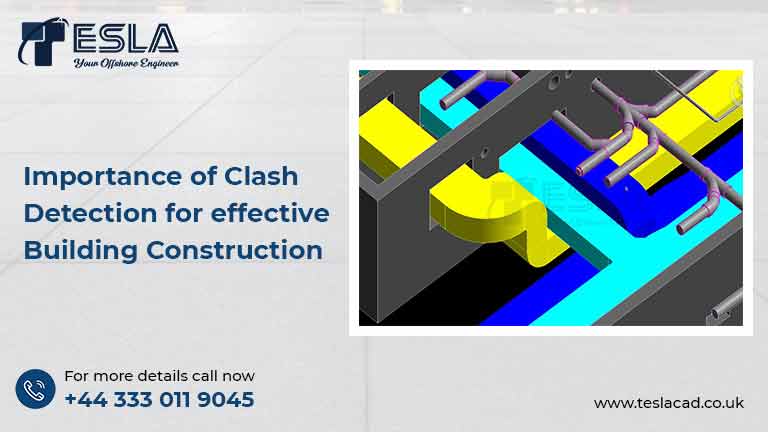How can MEP BIM enhance various building phases of a project?

In today’s era each sector is heavily reliant on automation owing to wide spread digital transformation. The AEC industry has been particularly welcoming towards new innovations and technologies. This is because there has been a constant need to increase productivity, reduce costs and improve quality, which becomes possible with the use of such advancements. Earlier, design firms used software like CAD to create MEP designs in 2D, but now with more advanced technologies, these firms have been shifting to BIM for creating their MEP models more precisely with reduced cost and improved quality. Using BIM models for MEP improves accuracy, resolves clashes and also provides better quality outcome in a significantly shorter time. Thus using BIM in various construction disciplines can prove to be of great advantage. The current article provides information on how using BIM for the MEP discipline helps in enhancing various phases of building’s life cycle.
1. MEP BIM for Design phase
BIM plays an essential role in the design phase of a structure. The design of the building contains the input of each stakeholder. Thus, it becomes extremely essential to have a transparent and a clear cut collaboration system in order to attain the common desired objective. This intelligent method is a 3D model-based process that assists MEP professionals with the design, detailing, documentation, and fabrication of buildings more efficiently. Through utilization of MEP BIM Services the entire team gets insights on design and constructability of the structure. It also helps in improving accuracy and detecting clashes and resolving them right in the design phase. Ultimately resulting in reduced wastage due to no design changes onsite. As the 3D model built for design is informative and provides details on design, materials, and is error free, it plays a crucial role in design process. Hence are no last minute changes of design onsite enabling the design process to be completed seamlessly.
2. MEP BIM for Coordination
A high degree of coordination is required among engineering design teams when specifying the layout of multiple building systems. With the help of BIM coordination, engineers can easily identify and resolve any inter or intra disciplinary clashes. For e.g. if the clearance space for the HVAC is not enough, it might result into a soft clash, initially such clashes were resolved on site, which led to considerable wastage of resources, however with the help of BIM, such clashes can be identified and resolved right at the onset.
Instances where the components are running into each other like a ductwork into beam requires conflict resolution between both structural and MEP engineers. As the intelligent model is data driven it contains all the necessary information in a commonly shared cloud platform which is easily accessible to all the stakeholders at any given time. If the MEP engineers resolve a clash and update it into the cloud, the structural and architectural engineers would also be in the loop due to the shared automated platform, thereby increasing coordination and collaboration between all parties.
3. BIM for MEP Installation
A large number of MEP components such as ducts, pipes, plugs etc. are prefabricated, which means these components are manufactured offsite at manufacturing hubs and then brought on site for mere purpose of installation. Utilizing BIM for installation and prefabrication ensures that the pre-fabricated modules and panels depicts the standard and accurate sizes of MEP components within the structure, so while assembling there are no fitting issues with respect to dimensions and size. The engineers with the help of BIM can first prepare clash free MEP models in 3D and then extract the drawings from the same in order to provide it to contractors for onsite construction. Moreover, it prevents unnecessary onsite accidents, decreases waste, and enhances the safety of the workplace. 5D BIM can be utilized to schedule the delivery of the components, so that time and other valuable resources are not wasted and there are no delays in the construction process. Resulting in timely project execution and completion.
4. BIM for Facility Management
Utilizing BIM methodology for management and maintenance of buildings is gaining popularity. This is because it becomes easier to manage and maintain the structure owing to the rich data it contains about each object. All the requisite information about the MEP components such as its physical condition, dimensions, product number, important documents etc. is stored in the model. This aids the facility management process by providing insights to the manager and repairman in renovation and refurbishment or other maintenance purpose. Each MEP component is labeled, making asset location simpler and quicker, especially for non-visible components thus helping in quality and timely maintenance of the structure. This reduces considerable amount of time wasted in gathering the product or component information, whilst saving cost which might have been incurred in employing a manual labor to do the work.
Conclusion:
Thus, it is evident that by utilizing advancements such as BIM in MEP discipline proves to be beneficial to various phases of a project. Just as BIM services enhance the design, collaboration, installation etc. of components when utilized in MEP domain similarly when Architectural BIM Services and Structural BIM services are utilized they too provide exceptional outcome and significantly aid the process of construction throughout various phases of project lifecycle as well as their respective discipline.
